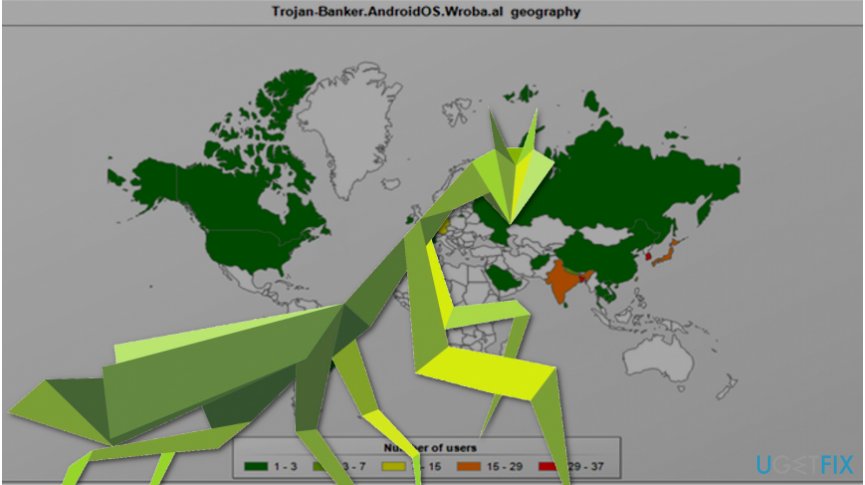Android malware now has evolved and uses 27 different languages

Roaming Mantis is a banking trojan also known as XLoader and MoqHao[1]. Previously, it mainly affected only Android devices, including smartphones, tablets, etc. According to the researchers, this malicious program was active just in Bangladesh, China, India, Korea, and Japan.
However, the latest news show that Roaming Mantis has been translated into more than 27 other languages and updated with additional features[2]. Currently, this banking trojan targets people from Europe and the Middle East, including:
- Bulgarian;
- Czech;
- English;
- Hebrew;
- Armenian;
- Italian;
- Georgian;
- Malay;
- Portuguese;
- Serbo-Croatian;
- Tagalog;
- Ukrainian;
- Traditional Chinese;
- Arabic;
- Bengali;
- German;
- Spanish;
- Hindi;
- Indonesian;
- Japanese;
- Korean;
- Polish;
- Russian;
- Thai;
- Turkish;
- Vietnamese;
- Simplified Chinese.
Suguru Ishimaru, the security researcher at Kaspersky Lab, thinks that hackers have used standard techniques to translate the text into different languages automatically and spread their infection globally[3]:
We believe the attacker made use of an easy method to potentially infect more users, by translating their initial set of languages with an automatic translator.
Criminals aim to infect iOS devices as well
While Roaming Mantis virus was initially designed for Android only, now hackers have switched their tactics and also target iOS gadgets[4]. Experts claim that the purpose of such actions is to spread the infection globally since the new iOS phishing attacks allow the crooks to get user's credentials.
According to the research, bogus DNS service resolves hxxp://security.apple.com/ domain to the 172.247.116[.]155 IP address which results in a redirect to the phishing website which looks exceptionally similar to legitimate Apple site. Thus, people are tricked to provide sensitive data directly to the criminals.
The fake website is also translated into 25 different languages and is designed to collect Apple ID details, including credit card number, expiration date, CVV code, log in and password. The only two languages that are missing — Georgian and Bengali.
Roaming Mantis is updated to perform crypto-mining activities
Experts have analyzed the code of Roaming Mantis and discovered that it is now able to exploit computer's resources and mine cryptocurrency. This is because Coinhive's script has been embedded to the HTML source code[5]. This Javascript miner has recently gained success among the hackers and became widely used across the world.
Once the user is connected to the landing page from the computer, its CPU power becomes accessible to the web miner. Likewise, CPU usage might increase up to 100% and cause PC damage or significant deterioration of its performance. In the long-run, some devices may even become unusable.
- ^ Tara Seals. Roaming Mantis swarms globally, spawning iOS phishing, cryptomining. Threatpost. The first stop for security news.
- ^ Danny Palmer. Malware campaign expands to add cryptocurrency mining and iOS phishing attacks. ZDNet. Technology News, Analysis, Comments and Product Reviews.
- ^ Suguru Ishimaru. Roaming Mantis dabbles in mining and phishing multilingually. Securelist. Kaspersky Lab's cyberthreat research and reports.
- ^ 'Roaming Mantis' Android Malware Evolves, Expands Targets. Dark Reading. Security. Protect The Business.
- ^ Roaming Mantis malware expands its reach. ITNews. Top technology stories.



